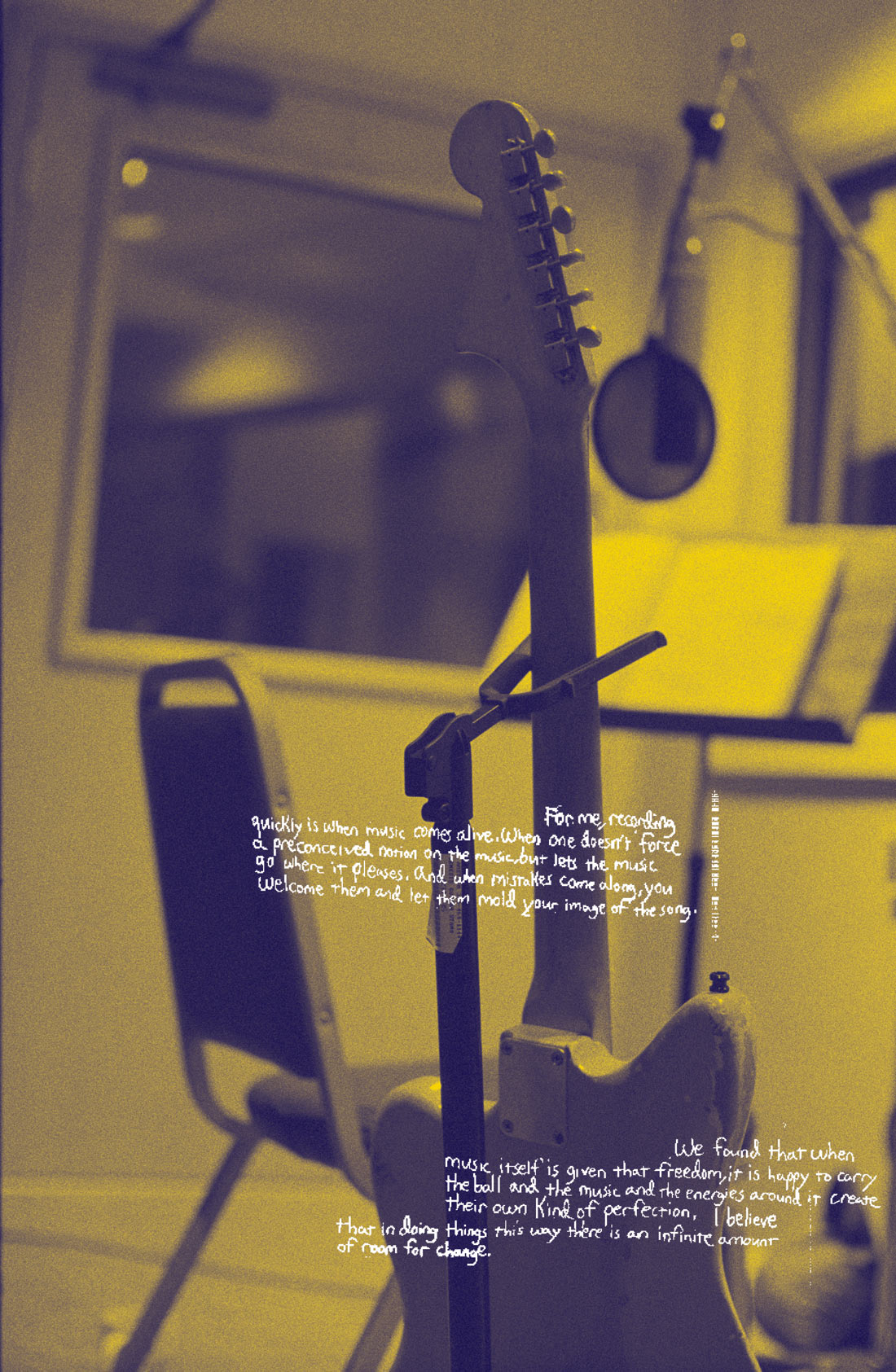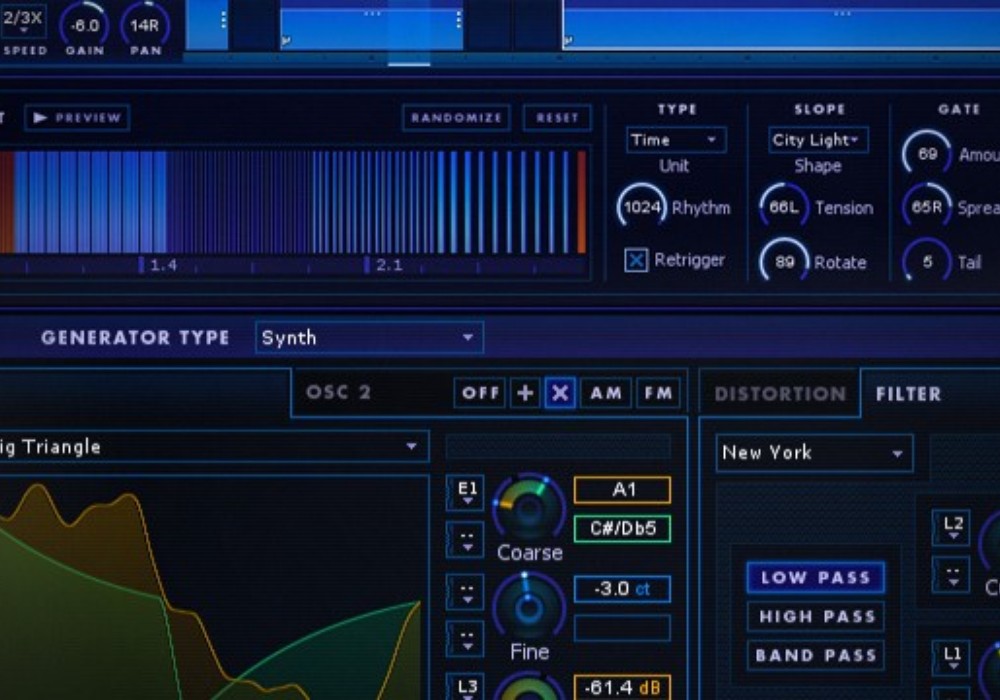If you primarily record to DAW and you're in need of a high-quality recording channel, take a look at SSL's XLogic Alpha Channel. It streets for $1695, which is $50 less than the Rupert Neve Portico 5032 (Tape Op #58) and quite a bit cheaper than channel strips from other high-end manufacturers. With nicely laid-out controls for a preamp, EQ, limiter, and A/D converter, it looks deceptively simple, and in fact, it's incredibly easy to use. Plug a mic or instrument into the front-panel Neutrik Combo jack, turn up the input gain, select a high-pass filter, do a bit of EQ'ing, and record away. If that's all you're looking to do, here's what you might want to know:
The Alpha Channel's mic preamp shares the same topology as the preamps in the E Series Signature Channel and the Duality console. The preamp's electronics are all discrete, and it sounds clean and clear, with a bit of an upper-midrange presence compared to my Hamptone Silverbox (Tape Op #55), my reference standard for clean and high-fidelity amplification. This presence tends to bring tracks recorded through the Alpha slightly forward in the mix, but I wouldn't characterize this trait as aggressive; it's nowhere near as pronounced as my Purple Audio Biz's upper-midrange bump with its Dual switch engaged, nor is it as conspicuous as my BAE 312A's tendency to make things larger than life. The Alpha's low end is good-not as big as my vintage API 312's, but not cloudy like my Neve 1272's. My Mackie Onyx preamp has a bit more low end, but the Alpha is again more forward in the upper mids. The Alpha also exhibits more noise at similar gain levels, possibly due to the switching power supply (an off-the-shelf Mean Well P25A14E) strapped inside.
The EQ is based on the stereo channel from the G Series console. It doesn't get super-surgical, even with the Q on the MF band set to highest, and the markings on the knobs are almost useless (as is the thin manual). The LF and HF shelves aren't extreme enough to do "radio effect" band-limiting, but they do sound smooth. You can add a good deal of HF shelf without getting crunchy. The LF band can be switched between shelf and bell, and I had no problems adding a fistful of low end to an Earthworks TC30K mic (which goes down pretty much to DC) placed in front of a drum kit without the sound getting all woolly, even when I dialed the LF shelf up to 600 Hz. Using the Alpha as a Bass DI, I could turn up the low end as big as I wanted it (while being careful of output level). There's a switch to enable or bypass the EQ-a fortuitous design decision because I found that even with the controls zeroed, enabling the EQ thinned the sound a wee bit. (If you're curious, within the EQ circuitry and elsewhere outside of the discrete mic preamp section, there are TL034, NE5532, NE5534, and LF356 JFET op-amps scattered throughout.) There's also a separate high-pass filter section that you can enable at one of three frequencies: 40, 80, or 120 Hz; and unlike some high-pass filters, the Alpha's is steep enough to get the job done without being obtrusive.
The limiter, which is taken from SSL's SuperPre remote preamp, is fairly transparent when bringing down transients that just go over, but it pumps on big hits. You can use it to tame a drum track, or you can use it to really slam a drum track-more on this later. A set of link I/Os on the back allow for stereo limiting with a second Alpha Channel.
The A/D converter is capable of 24-bit, 96 kHz operation, and you can lock it to an external S/PDIF signal. Without an external S/PDIF signal, the ADC defaults to 44.1 kHz operation. I didn't do any shootouts with my Apogee or Sony converters, but the converter sounded fine to me at both 44.1 and 96 kHz.
So, there you have it-an easy-to-use channel strip with the SSL sound. But wait, there's more to it than that:
The Alpha includes SSL's proprietary Variable Harmonic Drive circuit, which lets you add even or odd-order harmonics to your signal, depending on where you've swung the VHD knob (it goes to 11) and how close to clipping you're taking the preamp. By the way, the light behind the pad switch is a tri-color LED that goes green, yellow, and then red as the input level goes up; this 3-color "meter" comes after the VHD circuit, a good design decision considering that VHD can add up to 6 dB to the input. Anyway, when you're in the green, the VHD effect is very subtle, adding just enough "sugar" (tube-like distortion) to a track so it sits higher in the mix without its level going up. I found subtle amounts of VHD especially useful for vocals. When you're in the red, VHD adds a good deal of "excitement" (think transistors hit hard). I found that drums benefited greatly from the extra wallop with VHD turned up, as did chugging guitars. And remember what I said earlier about slamming drum tracks through the limiter? Well, add in VHD and you can really get some nasty sounds (in a good way) from otherwise boring drum tracks. It's a good thing that you can use the insert return as a line input (the insert send and return are on separate, balanced TRS jacks) because you might find yourself "re-amping" lots of your tracks through the Alpha with VHD turned up-but use caution, because the effect stacks up quickly.
And speaking of the insert, the signal flow through the Alpha is thus: preamp, VHD, high-pass filter, EQ, limiter, ADC. Front-panel switches allow you to enable and choose an insert point that's either pre or post-EQ. Even cooler, you can choose to sum the insert into the existing signal path (instead of breaking that path), which allows for parallel processing with external compressors, delays, EQs, etc. Very, very cool. Also, a good deal of thought went into the ADC configuration, because interestingly, the ADC is two-channel, and the left S/PDIF output is derived from the post-limiter output and the right S/PDIF output is from the signal feeding the insert send. This gives you a number of routing options. With the insert disabled and set to pre-EQ, the left S/PDIF output is derived from the post-limiter signal, while the right is pre-EQ. With insert disabled and set post-EQ, the left S/PDIF output remains derived from the post-limiter signal, while the right is post-EQ but pre-limiter. With insert enabled and set pre-EQ, left is a post-EQ and post-limiter version of the insert return; right is post-filter but pre-EQ of the Alpha's main input. With insert enabled and set post-EQ, left is the insert return, post-limiter; right is the input signal, post-EQ. This routing scheme is harder to describe in words than it is to utilize, but suffice it to say that it gives you the ability to record clean and effected versions of your input simultaneously, and as well, it allows you to record a totally different signal (via the insert return) on the left S/PDIF channel versus the right.
All told, the Alpha seems modestly appointed at first glance, and this unassuming nature of its layout makes it so easy to use; you can get nice, clean sounds out of it immediately. But what's alluring about it is that once you go beyond its basic operation, you can use the Alpha to add subtle or not-so-subtle character to your sounds, and its flexible routing, especially in regards to its digital output, provides additional benefits when tracking or mixing. The XLogic Alpha Channel is a "very serious piece of kit", as the Brits would say, and it's plenty obvious that the folks at SSL have loads of real-world recording experience behind its design. Now if the exchange rate would even out a bit, us Americans could afford to buy two of your made-in-UK Alpha Channels. ($1995 MSRP; www.solid-state-logic.com)
Tape Op is a bi-monthly magazine devoted to the art of record making.





_disp_horizontal_bw.jpg)